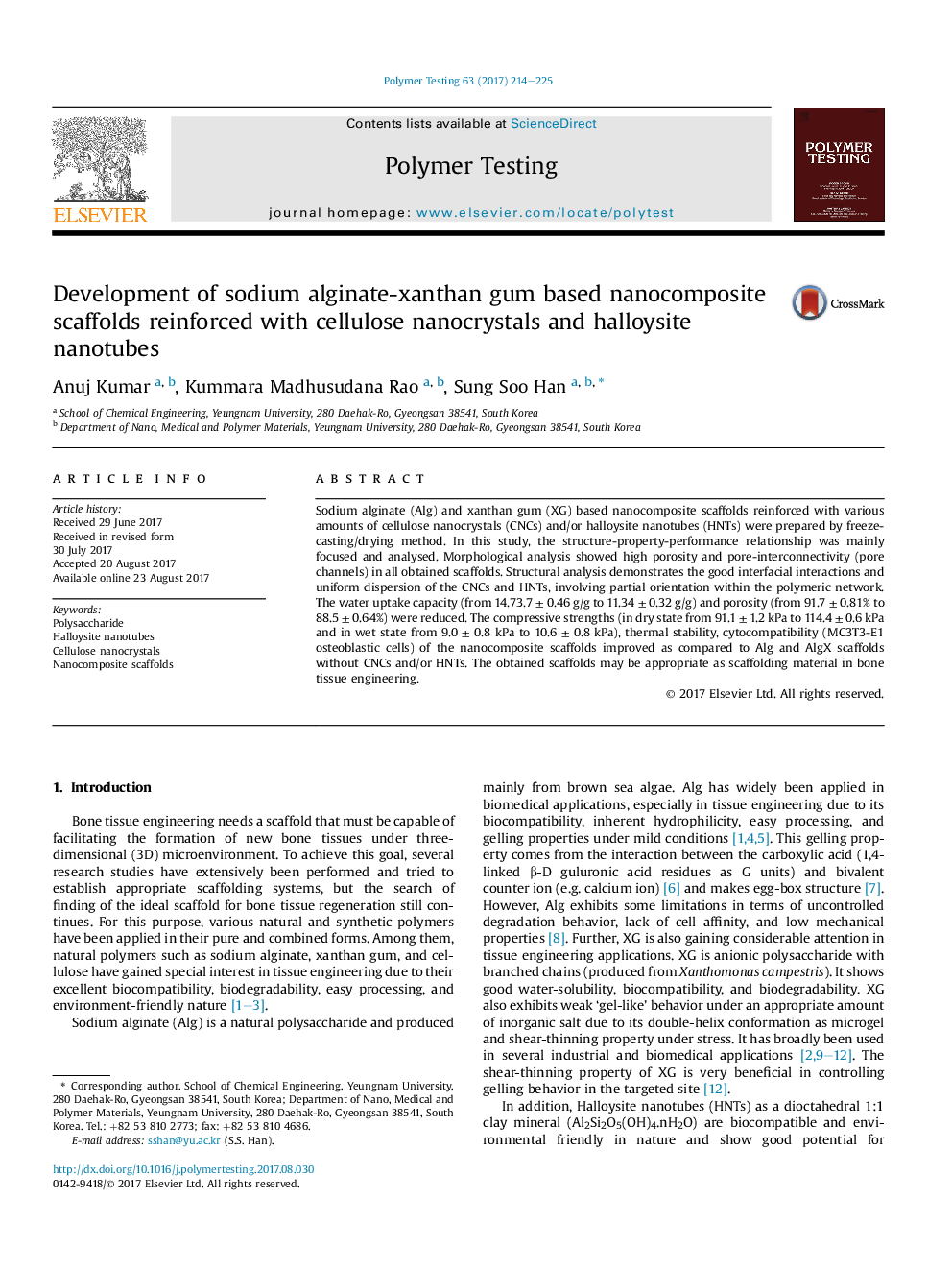| Article ID | Journal | Published Year | Pages | File Type |
|---|---|---|---|---|
| 5205253 | Polymer Testing | 2017 | 12 Pages |
â¢Polysaccharide nanocomposite scaffolds reinforced with CNCs and HNTs were prepared.â¢Effect of CNCs and/or HNTs was observed on the properties of nanocomposite scaffolds.â¢Interfacial interactions via functional groups were significantly improved within the network.â¢Improved rheological, mechanical, thermal, and cytocompatibility was observed.
Sodium alginate (Alg) and xanthan gum (XG) based nanocomposite scaffolds reinforced with various amounts of cellulose nanocrystals (CNCs) and/or halloysite nanotubes (HNTs) were prepared by freeze-casting/drying method. In this study, the structure-property-performance relationship was mainly focused and analysed. Morphological analysis showed high porosity and pore-interconnectivity (pore channels) in all obtained scaffolds. Structural analysis demonstrates the good interfacial interactions and uniform dispersion of the CNCs and HNTs, involving partial orientation within the polymeric network. The water uptake capacity (from 14.73.7 ± 0.46 g/g to 11.34 ± 0.32 g/g) and porosity (from 91.7 ± 0.81% to 88.5 ± 0.64%) were reduced. The compressive strengths (in dry state from 91.1 ± 1.2 kPa to 114.4 ± 0.6 kPa and in wet state from 9.0 ± 0.8 kPa to 10.6 ± 0.8 kPa), thermal stability, cytocompatibility (MC3T3-E1 osteoblastic cells) of the nanocomposite scaffolds improved as compared to Alg and AlgX scaffolds without CNCs and/or HNTs. The obtained scaffolds may be appropriate as scaffolding material in bone tissue engineering.
Graphical abstractDownload high-res image (303KB)Download full-size image
